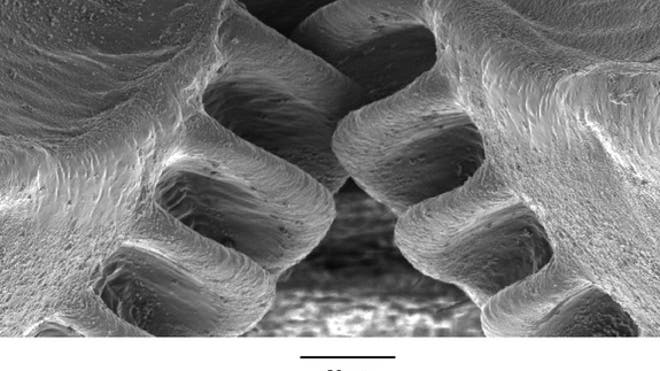South Florida Doctor Uses New Technology To “Re-Grow” Man’s Finger -
It’s being called a medical marvel. A south Florida doctor used a unique procedure to actually grow back a man’s finger that a horse bit off.
According to Dr. Eugenio Rodriguez, Paul Halpern, 33, arrived in Delray Beach with his finger in a zip lock bag. The insurance company wanted the rest of the finger amputated. However, a doctor wanted to try a unique procedure.
“This one right here, my index finger,” said Halpern.
Halpern was feeding his prized, hungry horse when it confused it for a cookie.
“After the treat it made a mistake. It’s a difficult horse and is had history using our training methods,” Halpern recalled.
The mistake cost him a third of his index finger. “One of the guys that worked with me reached his hand in the horse’s mouth, took the fingertip out, and I jumped in the car, grabbed the rest of my finger wondering what we should do,” said Halpern.
On the way to the hospital, Paul put his fingertip on a popsicle, but it wasn’t enough to save the extremity.
Then, he heard about a Deerfield Beach doctor that might have a way to fix the finger.
“He really wanted to have his finger healed, and fast,” said Dr. Eugenio Rodriguez.
Advanced, cutting edge, and without any surgery or amputation, general surgeon Eugenio Rodriguez said he could make the finger grow back.
“This is something, that there actually is no experience into this,” said Dr. Rodriguez.
Using the bladder tissue of a pig, Dr. Rodriguez made a template of Halpern’s finger and attached it to what was left.
The result was astounding.
The finger’s cells, bone, soft tissue, even nail grew into the mold. “It’s very interesting to see a patient heal. That’s my passion, wound healing. It is fascinating to have the new results,” said Dr. Rodriguez.
It’s a procedure both Dr. Rodriguez and Halpern agree could pave the road for other more complex injuries.
“I’m really grateful. I think it’s fantastic I think in the future there’s going to be other uses for it but it wasn’t a life threatening injury to me it was something that was an accident,” Halpern added.
The doctor says it will be nine to twelve weeks for a full recovery.
Read more -
It’s being called a medical marvel. A south Florida doctor used a unique procedure to actually grow back a man’s finger that a horse bit off.
According to Dr. Eugenio Rodriguez, Paul Halpern, 33, arrived in Delray Beach with his finger in a zip lock bag. The insurance company wanted the rest of the finger amputated. However, a doctor wanted to try a unique procedure.
“This one right here, my index finger,” said Halpern.
Halpern was feeding his prized, hungry horse when it confused it for a cookie.
“After the treat it made a mistake. It’s a difficult horse and is had history using our training methods,” Halpern recalled.
The mistake cost him a third of his index finger. “One of the guys that worked with me reached his hand in the horse’s mouth, took the fingertip out, and I jumped in the car, grabbed the rest of my finger wondering what we should do,” said Halpern.
On the way to the hospital, Paul put his fingertip on a popsicle, but it wasn’t enough to save the extremity.
Then, he heard about a Deerfield Beach doctor that might have a way to fix the finger.
“He really wanted to have his finger healed, and fast,” said Dr. Eugenio Rodriguez.
Advanced, cutting edge, and without any surgery or amputation, general surgeon Eugenio Rodriguez said he could make the finger grow back.
“This is something, that there actually is no experience into this,” said Dr. Rodriguez.
Using the bladder tissue of a pig, Dr. Rodriguez made a template of Halpern’s finger and attached it to what was left.
The result was astounding.
The finger’s cells, bone, soft tissue, even nail grew into the mold. “It’s very interesting to see a patient heal. That’s my passion, wound healing. It is fascinating to have the new results,” said Dr. Rodriguez.
It’s a procedure both Dr. Rodriguez and Halpern agree could pave the road for other more complex injuries.
“I’m really grateful. I think it’s fantastic I think in the future there’s going to be other uses for it but it wasn’t a life threatening injury to me it was something that was an accident,” Halpern added.
The doctor says it will be nine to twelve weeks for a full recovery.
Read more -






